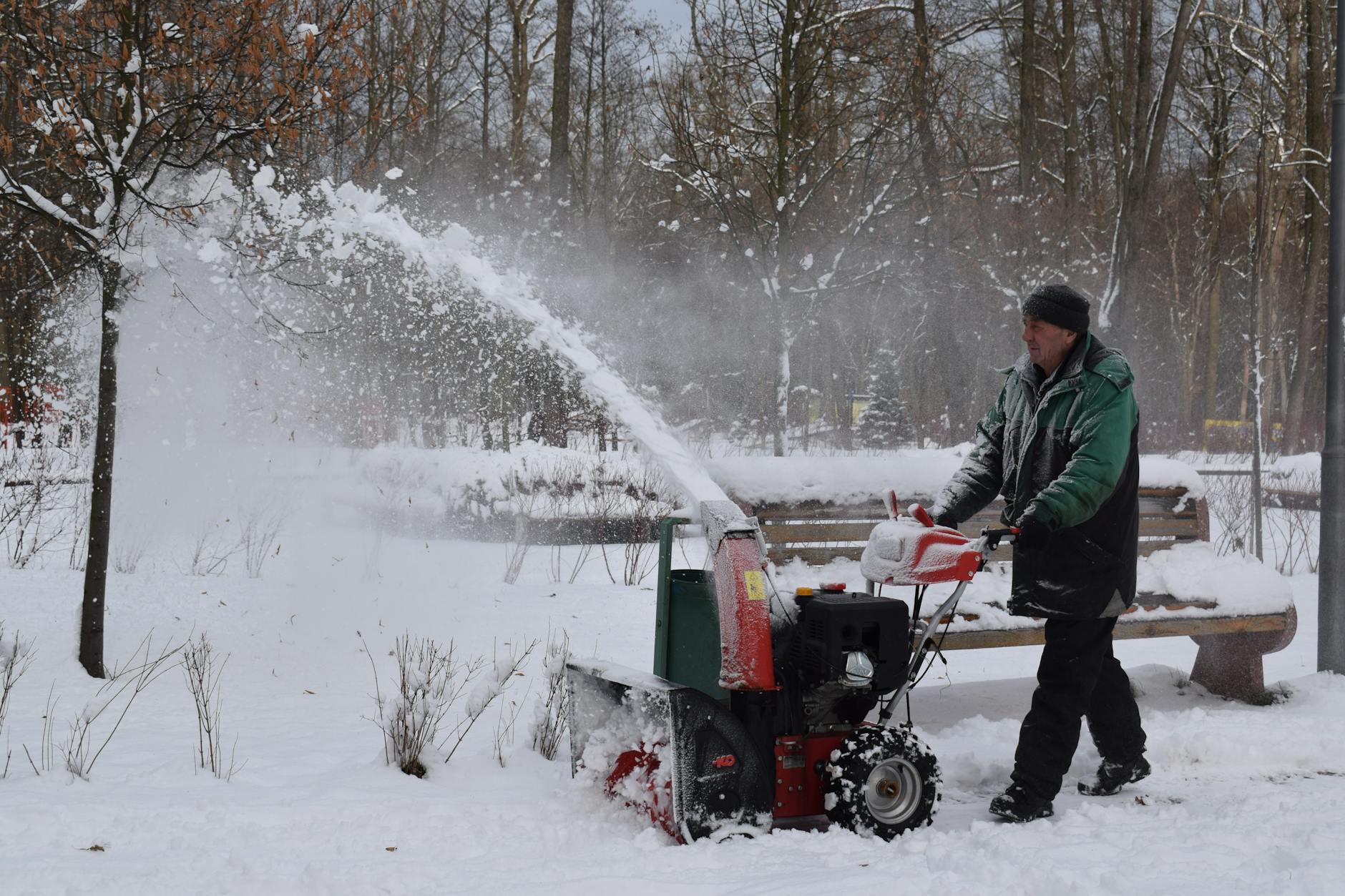If you’re wondering how to tell if a snowblower is flooded, the answer is that it probably is.
The good news is that it’s incredibly easy to tell distinctly whether or not a snowblower is flooded.
What is flooding?
A gasoline engine requires the appropriate mix of fuel and air in order to run correctly. This mixing occurs in the carburetor.
The carburetor draws air in through the air filter (if equipped), mixes with the gasoline particles that have been metered by the carburetor’s jets, and that mixture is drawn into the intake to the combustion chamber.
When we talk about flooding, this occurs when there’s so much gasoline present that it literally floods the combustion chamber.
There are a couple of situations that might cause this to happen, and we’ll get into that in just a bit.
What is the problem with a flooded snowblower?
The short-term problem is that the engine isn’t going to run until you unflood it.
The air/fuel mix is off so drastically, that the fuel can’t ignite. To compound the problem, every time you turn the engine over, more fuel is being drawn into the combustion chamber, so the flooding problem actually gets worse.
Furthermore, since the combustion chamber is used to having a specific amount of air volume to compress (and make compression), the starter or recoil rope cannot overcome the reduced volume (since there is more liquid present and less air).
With a severely flooded engine, this means that you won’t be able to even turn it over.
The long-term problem is this:
Let’s say, hypothetically, that you accidentally flood the engine. Then, since you’re unable to get it started, you get frustrated and give up.
That bit of gasoline is now sitting in the combustion chamber. Since gasoline is relatively “thin”, it will eventually seep past the piston rings and into the crankcase.
This dilutes the engine oil, so it can no longer provide the appropriate amount of lubrication. Without the proper lubrication, catastrophic damage can occur to the engine.
This is seen more frequently when water makes its way into the combustion chamber from sitting outside for a long time, but gasoline can do the same thing.
How does a snowblower engine flood?
The main cause of a flooded snowblower engine is improper use of the choke.
The choke is designed to provide a temporary increase in the fuel-to-air ratio in order to aid in starting a cold engine.
It “chokes,” or closes off air supply so that the mixture becomes rich with fuel. The theory is that the engine will now start, and then we can open the choke to allow the appropriate volume of air.
The problem is that if the engine doesn’t start and the user continues to utilize the choke. Because this mixture is fuel-rich, it will continually add more fuel to the combustion chamber.
Each successive cycle of the engine will exacerbate the problem until the engine becomes flooded.
To that point, anything else that upsets the air/fuel mix can result in a flooded engine.
This could include:
- improperly adjusted carburetor
- restriction in the air filter
3 signs of a flooded snowblower engine
In the beginning stages of a flooded engine, you will have a strong smell of gasoline.
This is because as the combustion chamber is beginning to flood, the engine will still turn over. Since the gasoline cannot ignite (due to the improper ratio), some of it will be pushed out of the exhaust port.
That gasoline that is pushed out is what you are smelling.
The second clue that your snowblower is flooded is when you reach the point that it will no longer turn over.
If you have an electric starter, you’ll hear a change in the pitch as there is more resistance.
You’ll physically feel that change if you’re using a recoil starter. Eventually, you’ll get to the point where the engine will no longer turn over.
To confirm that your engine is flooded, simply remove the spark plug. This is the third way to tell if the snowblower is flooded.
Since the spark plug has direct access to the combustion chamber, if it is flooded there will literally be a pool of gasoline in the chamber.
Most often, it will leak out as soon as you remove the spark plug.
How to unflood a snowblower engine
The good news is that the third method mentioned above is also the cure for unflooding a snowblower.
With the spark plug out, turn the engine over a few times. It will be much easier now since there is no compression with the plug removed.
When the piston fires on the compression stroke, it will forcefully eject the gasoline from the combustion chamber, so be prepared for a stream of fuel.
Now that the engine is unflooded, you can proceed with attempting to start it.
Going forward
Remember to use the choke sparingly. If the engine does not start after a couple of pulls with the choke closed, open it up for a few pulls.
This will help restore the air/fuel mix since it allows more air to enter the combustion chamber.
It might even start this way. If the engine is mildly flooded, by increasing the air intake and evening out, it might get back to the appropriate mix and fire.
If you’ve unflooded the engine, followed the above advice about the choke, and it’s still now firing, then you have some figuring out to do.
Instead of continually flooding the engine, figure out what is preventing the engine from starting to begin with (most likely a fuel issue).
Did I forget anything? Let me know in the comments below!
As an Amazon Associate I earn from qualifying purchases.

One thought on “How to Tell if a Snowblower is Flooded”